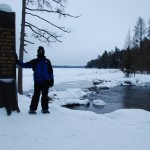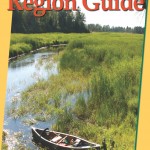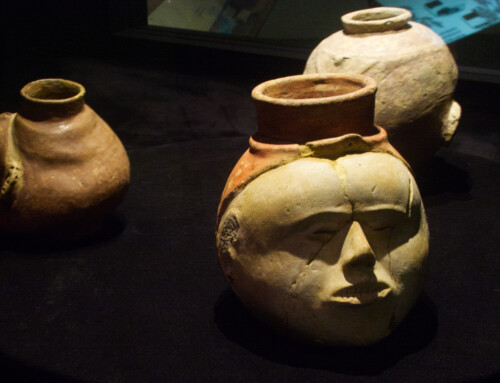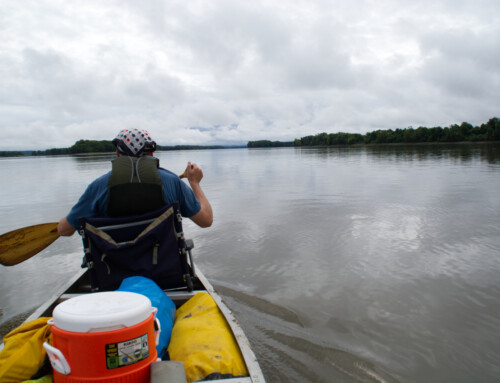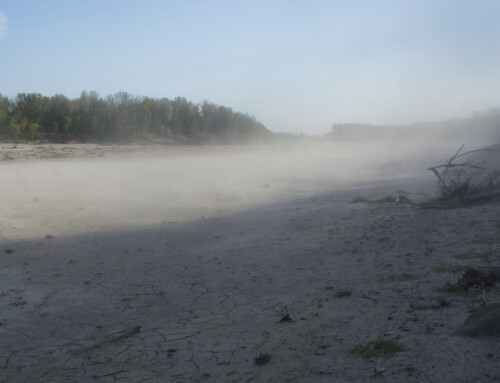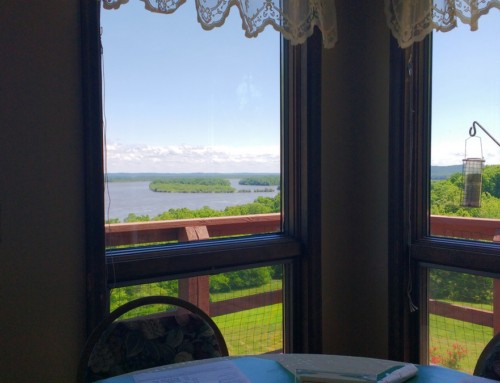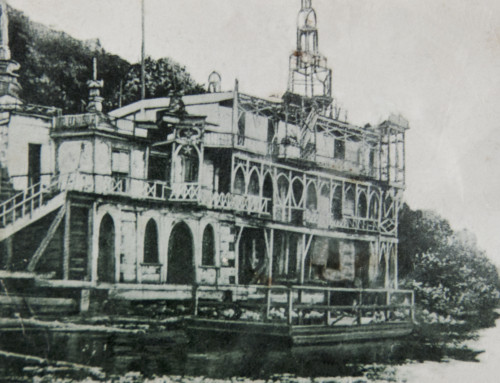The first time I visited Itasca State Park, where the Mississippi spills gently out of Lake Itasca, the park was covered in a foot-and-a-half of snow and most of the lake was frozen. It was late January, and I wanted to get an idea of what the place was like in winter. I wasn’t disappointed.
The sky was overcast but air temperatures had still managed to warm into the teens during the day. As I strapped on a pair of snowshoes, I felt grateful that I had missed the brutal -40°F temperatures from a couple of nights before. I remember how struck I was by the stillness and quiet in the park. As a city boy, I had no idea how quiet the world could be until I explored Itasca State Park that winter.
I also had an experience that very few people ever get: the opportunity to view and contemplate the beginning of the Mississippi River all by myself. In the summer, dozens of people regularly crowd into the space where the river begins, but that’s hardly the case on a typical January day.
In that first, brief visit, I got a taste of life Up North during the coldest time of year and was impressed by how little the weather impacted the daily life of folks who lived there. I also found out just how darn helpful folks can be, and later was pleased to find out that it wasn’t just a winter-related habit. I fell in love with the area and looked forward to spending more time there, which I did in 2011 by spending an entire summer roaming around the Headwaters Region.
I’ve been lucky enough to go back many times, often enough to develop my own rituals about who I want to visit and where I prefer to stay and eat. Now I get to share all that with you. The Headwaters Region Guide is my fourth Mississippi Valley Traveler Guide Book and may be the most rewarding one to write to date.
The Headwaters Region Guide follows the Mississippi River from Itasca State Park to the outer edges of the Twin Cities. Like the other Mississippi Valley Traveler books, the book dives into local and regional history, including a look at the history and culture of the Ojibwe people who’ve lived in the area for centuries. The book also offers tips on experiences that will help you live like a local, with a heavy emphasis on getting outside (at any time of year).
During my visits to the region, I’ve been lucky enough to meet some extraordinary people. In the Headwaters Guide, I get to introduce you to several of them and give them a chance to describe what they like about their hometowns. You’ll meet:
• Dr. Anton Treuer, Professor of Ojibwe at Bemidji State University;
• Mary Shideler, the Kayak Lady, of Grand Rapids;
• Aaron Brown, writer and educator, from the Mesabi Iron Range;
• Lorie Brown, owner of the coffee shop Coco Moon in Brainerd;
• Charles Marohn, Founder and President of Strong Towns, of Baxter/Brainerd; and
• Richard Bresnahan, an internationally acclaimed potter and Artist-in-Residence at Saint John’s University near St. Cloud.
The Headwaters Region is a rewarding place to visit, with a laid-back vibe, friendly and diverse people, and miles of wilderness to lose yourself in. If you’ve never been to the Headwaters Region, I hope this book convinces you to start making plans. If you were planning on making a quick stop at Itasca State Park and driving on, I hope this book convinces you to stick around a while longer. And if you’ve already visited the area, I hope this book convinces you that it’s time to go back and check out what you didn’t get to experience last time.
Enjoy!
Order your copy here.
©Dean Klinkenberg, 2016
